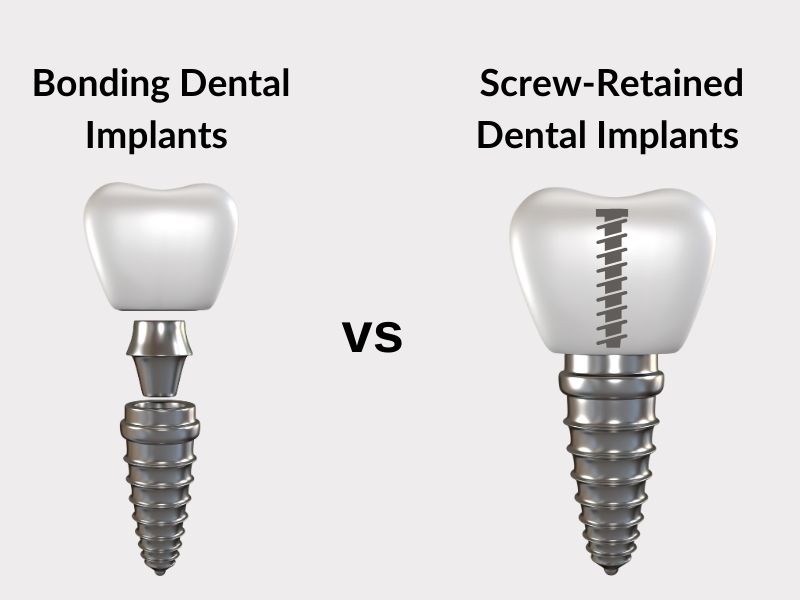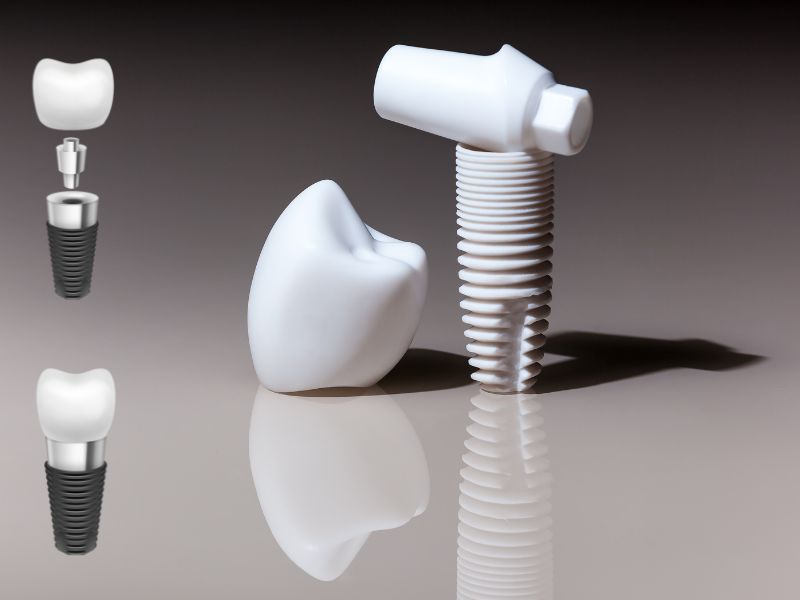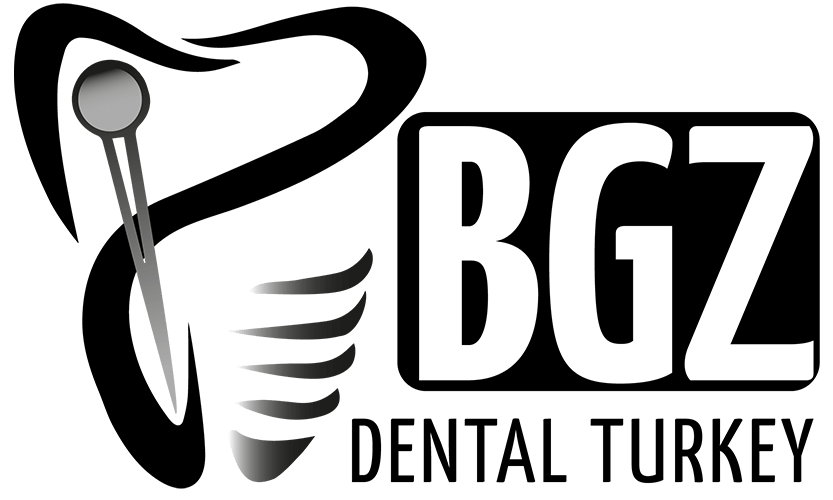
What is screwless dental implants?
Screwless dental implants represent a modern approach to dental implantology, eliminating the need for traditional screw mechanisms. These implants, crafted from biocompatible materials like titanium or zirconia, are designed to mimic the natural shape of teeth.Screwless dental implants offer a streamlined and efficient solution for tooth replacement.
How to do a screwless implant?

The procedure begins with the implant being carefully placed into the jawbone. Instead of utilizing screws, a specially formulated adhesive is applied to the implant's surface. The artificial tooth is then attached directly to the implant, forming a secure bond with the adhesive. This innovative approach allows the entire process to be completed in just one visit to the dentist. Additionally, it eliminates the need for sutures, thereby reducing the recovery time and enhancing patient comfort.
The Importance of Dental Implants
Missing teeth can significantly impact a person's quality of life, affecting their ability to eat, speak, and smile confidently. Dental implants address these issues by providing a stable and permanent solution that mimics the natural tooth structure. Made primarily of titanium, these implants integrate seamlessly with the jawbone, offering a secure foundation for replacement teeth.
Screw-Retained Implant vs Bonding Implant Method
Screw-Retained implants have become a cornerstone in modern dentistry, offering a reliable solution for individuals with missing teeth. This treatment method, celebrated for its durability and effectiveness, can be applied through two primary approaches: screw implants and bonding implants.
Screw Implants
Screw-Retained implants are the traditional form of dental implants. They involve securing the implant to the jawbone using a screw mechanism. This method is highly effective for ensuring the stability and longevity of the implant. Screw implants are typically used in scenarios where a single tooth or multiple teeth need to be replaced. The procedure involves placing a titanium post into the jawbone, which serves as a root for the new tooth. Over time, the bone integrates with the implant, providing a solid base for the crown or bridge.
Screw-retained Implant Advantages
Longevity: Screw-retained implants are renowned for their durability and can last a lifetime with proper maintenance. This long lifespan makes them a highly reliable option for dental restoration.
Natural Functionality: They closely mimic natural teeth in terms of functionality, particularly in chewing efficiency, which makes them suitable for back teeth that require substantial biting force.
Ease of Maintenance: If issues arise with the dental tissues or veneers, Screw-Retained implants allow for easy intervention and repair without needing to remove the entire implant.
Cost-Effective: While the initial cost might be higher, the longevity and durability of Screw-Retained implant can make them a more cost-effective solution over time compared to other options.
Disadvantages of Screw Implants
Aesthetic Limitations: Screw-retained implants are less suitable for front teeth where aesthetics are critical, as the screw access hole can affect the appearance.
Invasive Procedure: The placement process is more invasive, requiring more extensive surgery and a longer healing period.
Bonding Implants
Bonding implants, also known as cemented implants, involve attaching the crown or bridge to the implant using a strong adhesive. This method eliminates the need for screws, providing a more streamlined and often aesthetically pleasing result, especially for front teeth where appearance is crucial.
Bonding Implant Advantages
Aesthetic Appeal: Bonding implants provide a significant aesthetic advantage for front teeth since there is no visible screw, resulting in a more natural appearance.
Shorter Treatment Time: The procedure for bonding implants is typically quicker and less invasive compared to screw implants, leading to a shorter overall treatment time.
Comfort: The absence of a screw access hole means the crown is a single, solid piece, which can be more comfortable for the patient.
Disadvantages of Bonding Implants
Durability: Bonding implants are generally less durable than screw-retained implants and may not last as long, especially under high chewing forces.
Chewing Efficiency: They do not offer the same level of chewing comfort and performance as Screw-Retained implants, making them less suitable for back teeth.
Maintenance Challenges: The adhesive material used to bond the implants can be difficult to clean thoroughly, increasing the risk of infections and requiring meticulous oral hygiene.
Repair Limitations: If the crown or veneer is damaged, repairs can be more challenging compared to screw implants, potentially requiring replacement of the entire crown.
Differences between Screw-Retained Implants and Bonded Implants: Choosing the Right Implant
The decision between screw and bonding implants depends on several factors, including the location of the missing teeth, the patient's bone density, and personal preferences regarding aesthetics and comfort. Consulting with a dental professional is crucial to determine the most suitable type of implant for each individual case.
When choosing between screw-retained implants and bonded implants, it's important to consider the specific needs and circumstances of the dental application. Bonded implants are often preferred for areas where aesthetics are crucial, such as the front incisors. This is because the dental veneer is applied as a whole unit, eliminating any issues related to covering the screw access hole, thus providing a more natural appearance.
On the other hand, for areas that endure significant biting force, such as the grinding teeth, screw-retained implants are more suitable due to their enhanced durability. These implants prevent potential issues that might arise from the excessive use of adhesives in bonded implants. While the screw needs to be covered with a filling, this is not a visual concern since the tooth is located in the back of the mouth.
In cases where the dental veneer of a bonded implant is damaged, repairs can be challenging and may require the replacement of the entire veneer. Conversely, screw-retained implants offer easier repair options as the dental veneer can be removed via the screws, providing access to the gums, jawbone, and titanium implant without causing additional damage.
The adhesive residues used in bonded implants can be difficult to clean, increasing the risk of conditions such as gingivitis. Screw-retained implants do not have this issue since they do not use adhesives, and any loosening of the screw can be easily fixed by a dentist.
Ultimately, the choice between screw-retained and bonded implants depends on the location of the missing tooth, the patient's aesthetic preferences, and the specific requirements of the treatment. For cases involving multiple missing teeth, options like all-on-four or all-on-six implant treatments can be considered. It is essential to consult with a dental professional to make an informed decision that aligns with individual needs and expectations.
With our guaranteed treatments, we are always here for you.
Don’t hesitate to contact us, We will be happy to help anytime.



